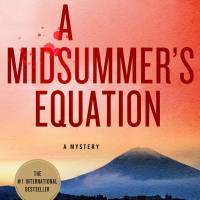"A Midsummer's Equation," the sixth book in prolific crime writer Keigo Higashino's "Detective Galileo" series, sees physicist and amateur sleuth Manabu Yukawa relocate to a sleepy seaside town in Shizuoka Prefecture. There to act as a scientific adviser on a controversial underwater drilling project that threatens the beautiful coastline, he is quickly drawn into an investigation of murders old and new when a fellow guest at his inn is found dead.
The book — the third of Higashino's "Galileo" novels to be translated into English — is a familiar blend of razor-sharp logic and pavement-pounding police procedural with more twists than a double helix. It's a classic whodunit where potential suspects and competing motives are played off against each other in an attempt to confound the reader.
Unfortunately, "A Midsummer's Equation" is not the highlight of the "Galileo" series. The resolution is far from surprising and the billed clash between environmentalists and big industry promises more than it delivers, eventually petering out as a minor subplot.
The prose, like Yukawa, is methodical and deliberate, and there is very little in the way of action — even the murder takes place offstage.
Yet there is much to enjoy. The characters are realistic — none of the archetypes often found in police procedurals — and the scenes in local inns and restaurants portray an authentically Japanese experience. This may explain why Higashino is so popular in Japan, he writes about normal people whose lives are interrupted by the horror of murder, not career criminals or sociopaths. If you like your crime fiction to have fireworks, this isn’t for you, but if you enjoy mysteries that unravel slowly, there’s a lot to like here.

















With your current subscription plan you can comment on stories. However, before writing your first comment, please create a display name in the Profile section of your subscriber account page.